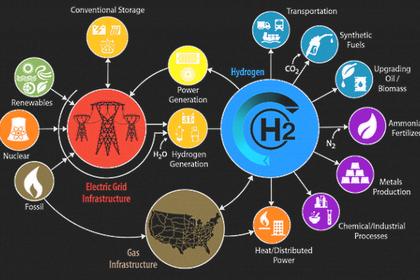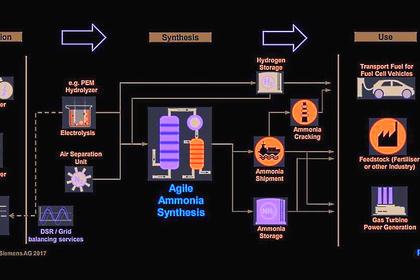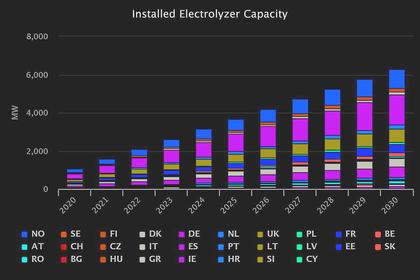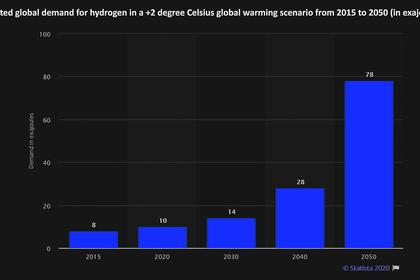
HYDROGEN ENERGY LOSSES
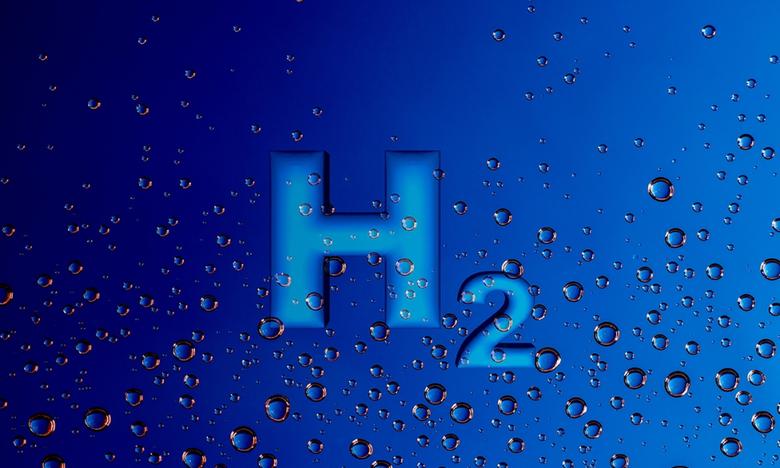
By Paul Hobcraft Innovation Knowledge Provider Agility Innovation
ENERGYCENTRAL - Dec 3, 2020 - We are at the point where “the rubber hits the road” or in Green Hydrogen’s case “the water needs to turn into H2 at scale and real value” and for that to happen it needs a massive commitment across so much that is work-in-progress today.
So much of where we are in Hydrogen is more of a promise theory or intent, than a reality. We need to moderate our rhetoric and provide realism before we completely over hype the green hydrogen. Impatience and growing frustration might kill off the hydrogen solution (again).
We need to massively be able to scale out solutions like the electrolyzer. We need to radically bring down existing production costs through different technology applications and design. We have to build a dedicated infrastructure and create real sustaining market demand. Today producing hydrogen means possible energy losses on the alternative.
We need to build the business case of Hydrogens value as the alternative to fossil fuel is a task-driven by the necessary policy change, customers willing to buy and replace their existing energy systems and suppliers able to offer the guarantees that any hydrogen replacement can work in demanding, more flexible conditions and offer affordability, sustainability, is effective and efficient beyond the existing solutions.
Oh, yes, to cap this all off it has to be at competitive prices to today’s energy sources. Or alternative solutions will need to be found, such as Nuclear perhaps. I mean not much of a challenge to switch away from fossil fuels is it?
Lets state the intent: the energy transformation requires a major shift in electricity generation from fossil fuels to renewable sources like solar and wind, greater energy efficiency and the widespread electrification of energy uses from cars to heating and cooling in buildings.
Not all sectors or industries can easily make the switch from fossil fuels to electricity. Hard-to-electrify (and therefore hard-to-abate) sectors include steel, cement, chemicals, long-haul road transport, maritime shipping and aviation all need imaginative and cost-effective alternatives to the existing solutions.
In a recent report “Green Hydrogen, a guide to policymaking” released by IRENA this month you are hit by a real dose of present reality.
Green hydrogen can provide that vital link between extending and sustaining renewable electricity generation (VRE) and provide solutions to those hard-to-electrify sectors.
We know Hydrogen is, without doubt, a suitable energy carrier and also for applications remote from electricity grid dependency. Also, Hydrogen can provide a high energy density; it can serve as a feedstock for chemical reactions and is well-positioned to produce a range of synthetic fuels and feedstocks to complete much of the energy transition.
Yet the barriers we face today are formidable to realize Hydrogen’s promise, picking up on the part of this report from IRENA.
Green hydrogen is regarded as the ultimate goal, but it needs to overcome the following barriers.
- Green hydrogen has high production costs, and adopting green hydrogen technologies is presently expensive. To offer hydrogen vehicles with fuel cells and hydrogen tanks costs at least 1.5 to 2 times more than the fossil fuel counterparts at least. Synthetic fuels for aviation are presently eight times more expensive. Transport costs are equally at an economic disadvantage.
- There is a lack of dedicated infrastructure. We only have 5,000 KM of hydrogen transmission pipelines compared to 3 million km for natural gas. There are presently only about 470 refuelling stations. We still are debating how and where to position our hydrogen sources and can it economically and safely can be transported.
- The energy losses are significant. About 30-35% of the energy used to produce hydrogen through electrolysis is lost (IRENA). To convert hydrogen to other carriers such as ammonia can result in 13-25% energy loss and transporting hydrogen requires additional energy inputs, estimated at 10-12% of the hydrogen itself. Using hydrogen in fuel cells can lead to additional 40-50% energy losses. Then you have the higher the energy losses; the more renewable electricity capacity will be needed. Can wind and solar satisfy both the global supply chain of electrification and simultaneously build a green hydrogen economy to solve the harder-to-abate challenges, for example?
- Today Hydrogen has a lack of Value Recognition. We have no green hydrogen market, no green steel industry, no green shipping fuels and still according to IRENA, basically no valuation of the lower GHG emissions than green hydrogen can deliver. Hydrogen today is not counted in official energy statistics of total final energy consumption. There are no internationally recognized ways of differentiating grey, blue or green hydrogen. We lack clear targets or incentives to promote the use of green hydrogen. We are totally inhibiting many downstream uses of green hydrogen.
- The critical need to ensure sustainability. Knowing an electric grid is only connected to renewables gives us the chance of green hydrogen. If fossil fuels are within the mix, any associated CO2 will need to be factored in when considering what hydrogen is being produced. The reality is fossil fuels will be in the hydrogen mix for some time to come and does this become a barrier, a taxing question and national emission debates. How can we ensure that grid-connected electrolyzer does deliver hydrogen with, at least, minimum emissions? Is this the case for the pursuit of green and blue hydrogen solutions setting out to capture all of the majority of the CO2
Realizing the true potential of green hydrogen is a long, dedicated journey, it needs to have a plan that is coordinated. Delivering green hydrogen needs international collaboration, it needs aligning standards, and it needs clear financing infrastructure to be staged along its “greening” journey.
Expectations for Hydrogen to significantly contribute to the Energy Transition are 5 to 10 years away. It is how we put the time between now and then will make or break Hydrogen as the viable, perhaps only sensible solution. Yet we must be realistic, grounded and highly focused on the significant challenges to be overcome.
We do need to face reality, dampen down the present hype around hydrogen and roll up our collective sleeves to tackle a highly complex set of challenges, yet we do need this real dose of reality.
-----
This thought leadership article was originally shared with Energy Central's Clean Power Community Group. The communities are a place where professionals in the power industry can share, learn and connect in a collaborative environment. Join the Clean Power Community today and learn from others who work in the industry.
Earlier:
